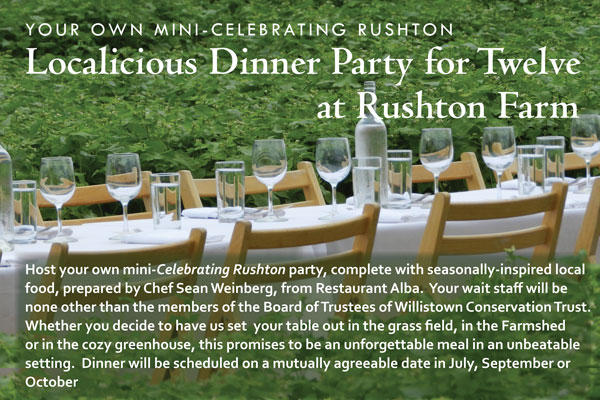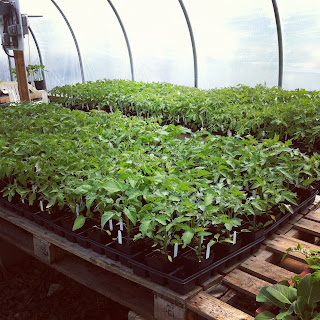All hands on deck, we start harvesting the rows of tomatoes—Brandywine, Jubilee, Early Girl, Striped German, Blue Beech, Amish Paste, Polbig, Eva Purple Ball. The vines smell minty when you lean in close to find a tomato wedged in the middle of the vines. Sometimes the tomatoes are hanging from the vine, other times they are nestled within the trellising. You can hear someone talking, but you can’t always see them, hidden by a green tangle with dabs of red or yellow. We reach in, twist off the top, and place the tomatoes face down in the crates so they don’t bruise each other. I like harvesting Black Princes, Russian heirlooms with mixed hues, a dark reddish purple with green shoulders. The color of Eva Purple Ball, a German heirloom, is also remarkable, a bright pinkish red; this variety dates back to the late 1800’s. Sometimes they are soft or split, so you can chuck the tomato out of the field if you are feeling strong, or toss one at an unsuspecting friend walking by. I like startling experience of walking through the farm and finding an unexpected tomato in the tall grass, a small sign that someone harvesting before you has a good arm.
While harvesting tomatoes one of our volunteers, Alex, mentioned a fascinating phenomenon. He remarked on what power a taste can have to evoke an emotional memory. This phenomenon is known as the Proustian experience. Marcel Proust made such a moment famous with his Remembrance of Things Past, after he bit into a petite madeleine cookie and took a sip of tea—“the water-lilies on the Vivonne and the good folk of the village and their little dwellings and the parish church and the whole of Combray and its surroundings, taking shape and solidity, sprang into being, town and gardens alike, from my cup of tea.” While harvesting beans this week, I bit into a bean and, suddenly, I was a little kid, barefoot in the garden picking green beans that climbed up a bamboo teepee. It took me right back to afternoons where I’d go search for caterpillars crawling up our crab apple tree and on our orange slide. I’d look for cicada casings, upright, still clinging to the bark, frozen in time. Sometimes I was afraid to touch them, thinking they were real cicadas. I remember hanging from my knees, looking at the world upside down letting my hair brush the acorns, wishing my hair was longer. Going behind our small wooden playhouse, I remember finding moss and wondering why it only grew there. Sent to find raspberries, I’d wander into the furthest back garden. It’s overtaken by rose-a-sharon now, higher than your shoulders.
One of the elements that makes memory so vivid is the emotional content of it. I learned this at Kenyon’s Writing and Thinking program. You may not remember the details of a childhood memory precisely, but the emotion will be accurate. In “Blackberry- Picking,” Seamus Heaney captures the joy of picking blackberries and the strong childlike urge to pick as many as possible—
You ate that first one and its flesh was sweet
Like thickened wine: summer's blood was in it
Leaving stains upon the tongue and lust for
Picking. Then red ones inked up and that hunger
Sent us out with milk-cans, pea-tins, jam-pots
Like thickened wine: summer's blood was in it
Leaving stains upon the tongue and lust for
Picking. Then red ones inked up and that hunger
Sent us out with milk-cans, pea-tins, jam-pots
Where briars scratched and wet grass bleached our boots.
At the close of the poem, he vividly remembers finding a fungus among the berries,
At the close of the poem, he vividly remembers finding a fungus among the berries,
I always felt like crying. It wasn’t fair
That all the lovely canfuls smelt of rot.
Each year I hoped they’d keep, knew they would not.































